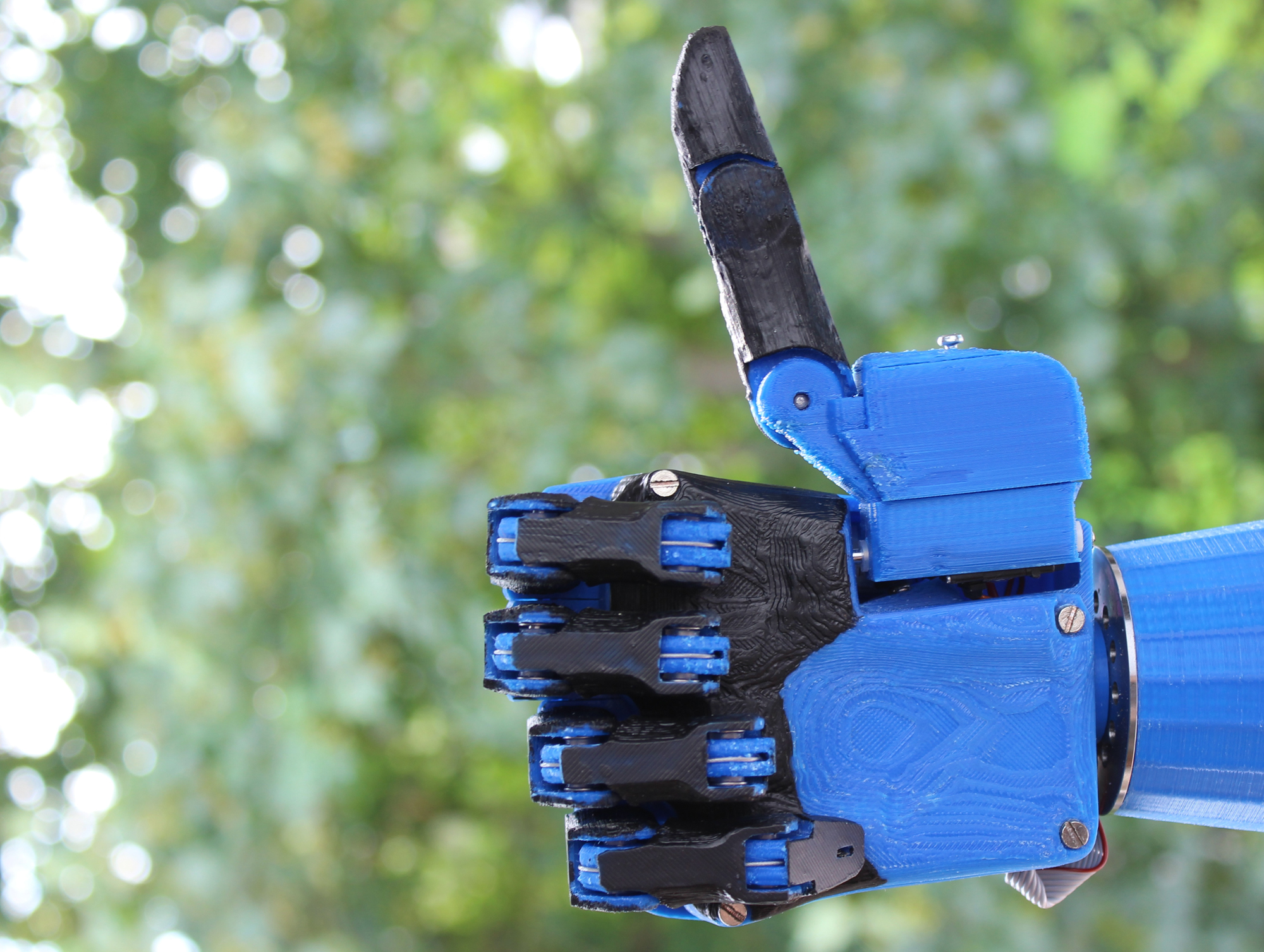Developing Low Cost Prosthetics with 3D Printing

Prototype of the Dextrus robotic prosthetic, the design goal of the Open Hand Project. Courteys of Indiegogo.
Latest News
September 9, 2013
Prosthetics is one area of the medical industry where 3D printing is already in a position to make a big impact. The individualized nature of prosthetics makes additive manufacturing (AM) a natural choice for building prosthetics. Creating one-off prosthetics with more traditional methods of manufacturing would be much more expensive than simply using an AM system to build the same end product.
In addition, AM offers advantages in flexible design that are much easier to achieve than with other manufacturing processes. These advantages have already led to a simple prosthetic hand design and the envelope keeps getting pushed forward with each new iteration of prosthetic development. UK robotics inventor, Joel Gibbard, has launched the Open Hand Project, which aims to bring low cost robotic prosthetics to the public.
Gibbard’s design, named the Dextrus, uses 3D printed parts, electric motors and steel cables to reproduce the action of the human hand. To assist with gripping, the fingers of the hand are covered in rubber. Gibbard expounds upon the virtues of the Dextrus on his Indiegogo project page, saying:
The hand can be connected to an existing prosthesis using a standard connector to give an amputee another option. It uses stick-on electrodes to read signals from their remaining muscles, which can control the hand, telling it to open or close.The fingers are individually powered and each one can sense when an object is impeding its movement. This gives it the ability to grasp objects gently and means the fingers can really wrap around unusual shapes to grip them firmly.
The power to 3D print the majority of the large, moving pieces of the Dextrus means Gibbard can save on costs. Instead of a multi-thousand dollar price tag, the new prosthetic can be obtained for the relatively modest sum of £700 (just under $1,100). When you consider many families spend more on that for a complete entertainment center, the price looks plenty reasonable for the benefits offered.
Gibbard has been testing out his design with a chef that lost his right hand to meningitis, and has used his feedback to improve the model. Funds from the Indiegogo campaign will go toward PCB and electronic designs required for modest production runs of the Dextrus, and a “modest salary” for the inventor to keep him in the workshop for the coming year.
Below you’ll find a video about the Open Hand Project.
Source: Indiegogo
Subscribe to our FREE magazine, FREE email newsletters or both!
Latest News
About the Author
John NewmanJohn Newman is a Digital Engineering contributor who focuses on 3D printing. Contact him via [email protected] and read his posts on Rapid Ready Technology.
Follow DE






